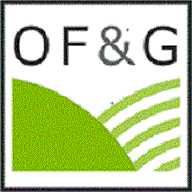Your documents will be reviewed by a second verification reviewer and checked by the Woodland Carbon Code team to ensure they are consistent and complete.
If the verification is successful, the verifier will issue a verification statement. It will normally be valid for ten years.
The verification statement will have a green, amber, red or not verified rating. In a group, each project will have its own rating. Here’s the standard for each rating and the implications for your project and units.
Green (unmodified)
This project delivered all carbon units within the current vintage and there are no concerns about the ability of the project to deliver units in future vintages.
| | Year 5 | Year 15 onwards |
| Planted woodlands | Trees are healthy and the actual stocking density is at least 90% of the planned stocking density without any corrective actions, and The site did not undergo significant beat-up (more than 30% of trees) in the planting season prior to the verification survey, and There is no concern about the health or growth of the trees. | The actual sequestration is more than or equal to the predicted sequestration, with no corrective actions required, and There is no concern about the health or growth of the trees. |
| Natural regeneration | Seedlings are healthy and the actual stocking density is at least 400 stems per hectare, and There are no concerns about the level or browsing or other threats to the success of natural regeneration. | The site has reached the target stocking density within the upfront claimable area, and There are no concerns about the level or browsing or other threats to the success of natural regeneration. |
Implications of green (unmodified) status:
| Year 5 | Year 15 onwards |
| Any Pending Issuance Units in the vintage will be converted to Woodland Carbon Units | Any Pending Issuance Units in the vintage will be converted to Woodland Carbon Units. If your project sequesters more than predicted, we will issue extra Woodland Carbon Units |
Amber (modified)
This project delivered all carbon units within the current vintage but is verified subject to ongoing corrective actions being completed. Provided the remedial plan to complete these actions is followed, there are no concerns about the ability of the project to deliver units in future vintages.
The standard for amber (modified) status:
| | Year 5 | Year 15 onwards |
| Planted woodlands | A remedial plan is provided which addresses concerns. Amber (modified) status is given if:
- The actual stocking density surveyed was 70 to 90% of the planned stocking density and beat-up is required or
- Significant beat-up (more than 30% of trees) was undertaken in the previous planting season or
- There are concerns the actual net planting area could be less than planned by up to 10% or
- There is concern about the health or growth of the trees.
| The actual sequestration is more than or equal to the predicted sequestration, but a remedial plan is required to ensure continued delivery. |
| Natural regeneration | No amber status | No amber status |
Implications of amber (modified) status:
| Year 5 | Year 15 onwards |
Any Pending Issuance Units in the vintage will be converted to Woodland Carbon Units If you have grant aid, we will inform the relevant grant team of the status of your project. | Any Pending Issuance Units in the vintage will be converted to Woodland Carbon Units. If your project sequesters more than predicted, we will issue extra Woodland Carbon Units If you have grant aid, we will inform the relevant grant team of the status of your project. |
Red: (adverse)
This project failed to deliver all carbon units within the current vintage and/or there are concerns about this project’s ability to deliver sufficient units in future vintages.
The standard for red (adverse) status:
| | Year 5 | Year 15 onwards |
| Planted woodlands | The actual stocking density is less than 70% of planned, or Where there are concerns the net planted area is over 10% smaller than planned, or Any live trees are seriously compromised in health or growth such that the project is unlikely to be on track by year 15 or The project might reach amber (modified) status but there is no remedial plan. | The actual sequestration is less than the predicted sequestration, or There’s evidence tree health/growth is likely to be compromised in future (through pest/disease, climate, ownership, development or other), and there’s no remedial plan to address this. |
| Natural regeneration | The stocking density has not yet reached 400 stems per hectare in the upfront claimable area or There are serious concerns about browsing levels or other threats to the success of natural regeneration | The stocking density has failed to reach the target density in the upfront claimable area, or There are serious concerns about browsing levels or other threats to the success of natural regeneration |
Implications of red (adverse) status:
| Year 5 | Year 15 onwards |
All Pending Issuance Units in the vintage will be marked ‘not delivered’ You will have to do an extra verification at year 10. Any project in a group with red status will verify alone at year 10 and the whole group will verify together again at year 15. You will re-assess your carbon prediction and update the carbon calculator at year 10 or 15, once the level of establishment is clearer. If this reduces the number Pending Issuance Units from future vintages, some Pending Issuance Units will be marked 'not delivered'. If you have grant aid, we will inform the relevant grant team of the status of your project. If any Pending Issuance Units marked ‘not delivered’ were sold, you may need to compensate the buyer, depending on the terms of your sales contract. | If the actual sequestration is less than predicted, then any undelivered Pending Issuance Units will be marked 'not delivered'. Your next verification will normally be due in ten years You must re-assess your carbon prediction and update the carbon calculator. If this reduces the number of Pending Issuance Units from future vintages, some Pending Issuance Units will be marked 'not delivered'. If you have grant aid, we will inform the relevant grant team of the status of your project. If any Pending Issuance Units marked ‘not delivered’ were sold, you may need to compensate the buyer, depending on the terms of your sales contract. |
Not verified (unsatisfactory - disclaimed opinion)
In some cases where there are serious concerns about your project and corrective actions were insufficient or not received within the agreed timeframe, and/or verification has not been possible e.g. due to a lack of sufficient information, access or cooperation, the verifier will provide an ‘unsatisfactory’ status. Where this occurs, both the project and all Pending Issuance Units allocated to the project will be marked ‘not delivered’. If Pending Issuance Units were sold, you may need to compensate the buyer, depending on the terms of your sales contract.



